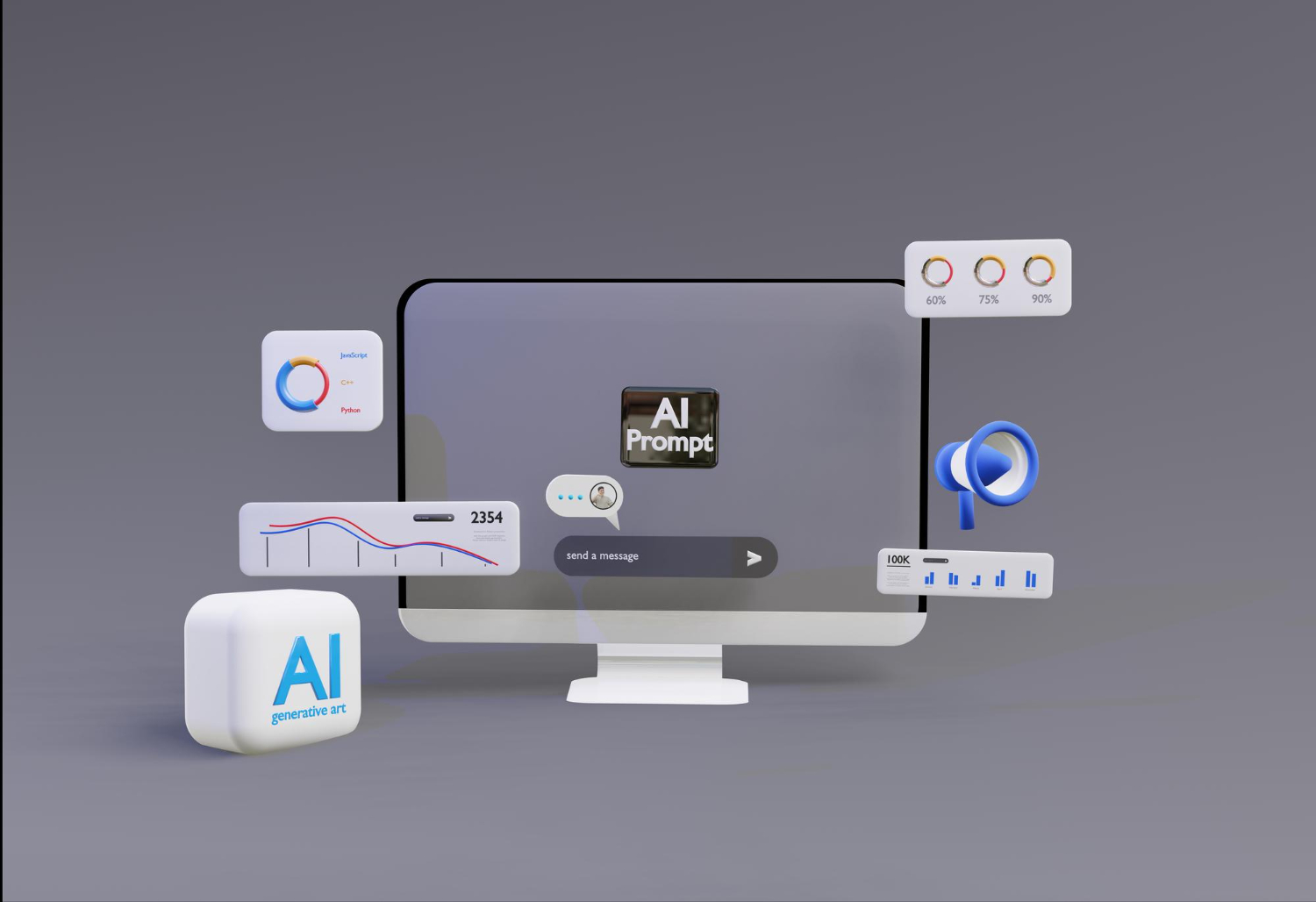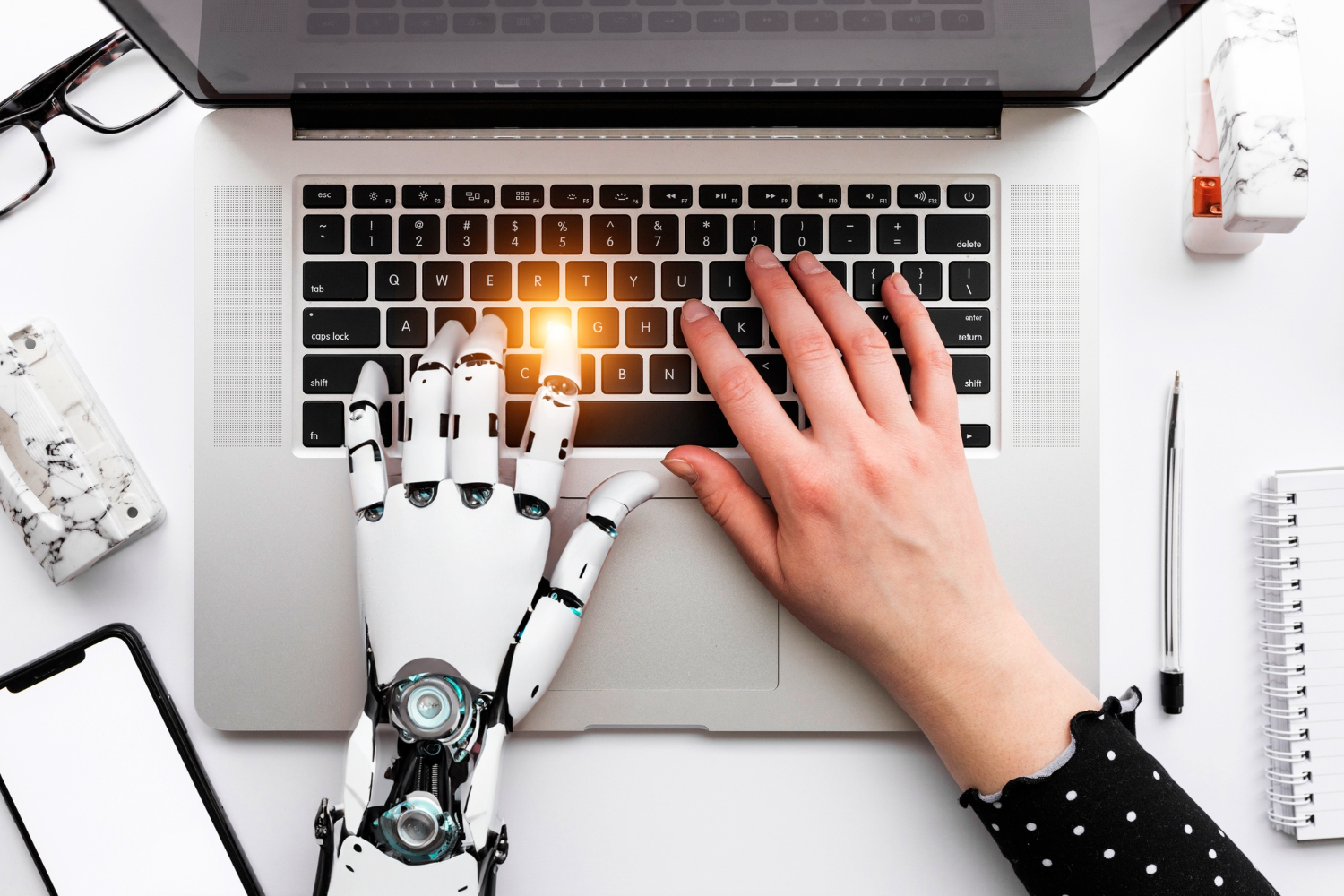AI in website development speeds up routine tasks, making work more efficient. Developers can use AI to write cleaner code, test features faster, and reduce mistakes. AI tools also help design sites that adapt to user needs, offering a better browsing experience. Tasks like content generation, image editing, and layout adjustments can now be done with little manual effort.
AI in web not only saves time but also allows teams to focus on creative work. Moreover, AI can predict user behavior, helping developers plan better features. By blending automation with human skill, AI makes web development faster, more accurate, and more adaptable to changing user expectations.

Advantages of AI in Web Development
Artificial intelligence is becoming an important part of modern web projects. It offers practical solutions to everyday problems developers face and improves the way sites function. Some key advantages of AI in website development include:
- Faster coding. AI tools can write parts of the code, spot errors, and suggest fixes before they cause problems.
- Better design choices. AI can create layouts and color schemes that match a brand’s style and user preferences.
- Improved user experience. Websites can adapt content, layout, and features based on how visitors interact.
- Smarter testing. AI can run many tests quickly, finding problems that manual checks might miss.
- Content creation. Text, images, and even videos can be generated or refined with AI support.
- Website security. AI systems can detect unusual activity and block possible threats.
- Faster updates. An AI automation agency can help maintain sites by automating updates and fixing broken elements.
These benefits make AI a practical tool for both small and large projects. It helps reduce manual work while improving the final result. With AI in website development, teams can create sites that are not only functional but also more aligned with user needs. As the technology continues to improve, its role in web development will only grow.

How to Use AI in Web Development
Artificial intelligence has found its way into almost every stage of building and running a website. It can take over repetitive tasks, make suggestions, and even predict how users will interact with a site.
For developers and designers, even the best AI for web development is not a replacement for skill but a tool that adds speed, precision, and flexibility to the process. From coding and design to testing and maintenance, AI is now part of the daily workflow in many projects.
1. AI-Powered Code Generation
In 2024, AI produced about 41% of all code, amounting to roughly 256 billion lines. AI tools can create sections of code from short instructions or sample inputs. They can prepare templates, correct syntax mistakes, and rewrite outdated code without requiring the developer to do all the work manually. This is useful for those just starting out as well as for experienced programmers who need to save time.
Advantages:
- Saves time on writing repetitive parts of the code
- Reduces mistakes in structure and logic
- Speeds up the beginning of new projects
Knowing how to apply AI in web development allows coders to spend more time thinking about the structure, planning features, and solving problems, instead of typing every line themselves. It does not replace skill but makes the process smoother and less repetitive.
2. Automated Testing
Testing is an essential part of web development, and AI in web development can make this process faster and more consistent. AI-powered testing tools can run thousands of checks in a short time. They can look at the way a site functions, test it on different devices and browsers, and compare results to find patterns that might signal a problem. In many cases, these tools can predict which areas are more likely to fail by learning from past errors. This means potential issues can be fixed before they become visible to users.
Advantages:
- Finds problems faster than manual testing
- Improves accuracy in spotting small or hidden bugs
- Supports frequent testing without extra work
When testing is automated, developers can release changes with more certainty that the site will run as expected. It also frees them from repetitive checking, giving them time to focus on improving features and design. AI testing works continuously, so even after launch, the site can be monitored for new problems. This reduces the risk of users encountering errors and helps keep the site stable over time.
3. AI for Website Personalization
McKinsey reports that 71% of consumers expect companies to provide content tailored to them. AI can adjust website content, design, and features for different visitors. It studies user actions and makes real-time changes to match preferences or needs.
Advantages:
- Creates a more relevant experience for each visitor
- Increases user satisfaction and engagement
- Helps guide visitors toward specific actions, such as purchases
Personalization removes the one-size-fits-all approach and makes the site feel more responsive to individual users.
4. Intelligent Chatbots
Chatbots powered by web development and AI can manage a wide range of tasks that would normally require human attention. They can answer common questions, give step-by-step help, or connect the user to a staff member if the matter is more complex. These tools can work without breaks and respond in real time, which makes them useful for websites that receive visitors from different time zones. A well-designed chatbot can also guide users through forms, help them find information, or suggest the next step based on their request.
Advantages:
- Reduces waiting time for customer support
- Handles repeated questions without human effort
- Operates all day and night without extra staff costs
By responding instantly, chatbots make the experience smoother for the user and allow human teams to focus on situations that require personal attention. They can also store basic information from the conversation, so when a person does step in, they already have the context. This saves time and avoids repeating the same questions.

5. Automated Design Assistance
AI design tools can help create the look and feel of a website by suggesting layouts, matching colors, and recommending font pairings that work well together. With only a few details about the brand style and purpose, they can prepare draft designs that give a clear starting point. These drafts can be adjusted and improved, but they save the designer from starting with a blank screen. Some tools can also adjust designs for different screen sizes, making sure the site looks good on both mobile and desktop.
Advantages:
- Speeds up the design stage
- Keeps visual style consistent across all pages
- Brings new ideas for layout and style
By reducing the time spent on trial and error, these tools give designers more space to focus on creative choices and unique elements. They are also useful for teams that need to produce multiple pages quickly while keeping a unified style. Even if the final result still needs human adjustments, AI design assistance can reduce the initial effort and make the design process more efficient without compromising quality.
6. Content Creation and Optimization
AI can write blog posts, product descriptions, headlines, or captions. It can also optimize existing text for clarity, tone, or keyword use.
Advantages:
- Produces content quickly
- Improves readability and structure
- Adjusts tone for different audiences
With AI, teams can keep their sites fresh with new content without hiring large writing teams.
7. Predictive Analytics for User Behavior
AI in web development can study how people have used a website in the past and predict what they are likely to do next. This may include which pages they will visit, what products they might be interested in, or when they are likely to leave the site. Such information can guide design decisions, improve the placement of features, and make marketing messages more relevant. For example, if users often stop at a certain stage of a form, the design can be adjusted to make that step easier.
Advantages:
- Helps plan future updates based on patterns in user activity
- Improves targeting for promotions or new features
- Reduces spending on features that receive little attention
By showing where users engage most and where they lose interest, predictive analytics allows teams to focus their energy on the parts of the site that matter most. It can also help with time promotions or content releases when users are more likely to respond.
8. Website Security Monitoring
AI tools can scan traffic patterns, detect suspicious activity, and block threats before they cause damage. This includes protection against hacking attempts, spam, and fraudulent transactions.
Advantages:
- Detects unusual activity early
- Reduces the risk of downtime from attacks
- Protects sensitive user information
Automating security checks means threats can be addressed instantly, without waiting for manual intervention.
AI in web development is not about replacing human talent. It is about making each stage of the process faster, more accurate, and better adapted to user needs. Developers can use these tools to build stronger, safer, and more user-friendly sites while keeping their focus on creativity and strategy. As AI strategies for web development improve, their role in web projects will only continue to expand, offering more ways to simplify work and improve results.

The Future of AI Use in Web Development
Web development with AI is moving from being a helpful extra to becoming a standard part of web projects. As tools grow more advanced, they will handle more complex tasks and help teams work faster while improving the quality of sites. AI-based web development will not replace the human role in design or development but will work alongside it, taking on time-consuming jobs and offering deeper insights into user needs.
Possible Directions for AI in Web Development:
- Smarter code creation. AI will be able to build complete features from simple instructions, reducing the time from idea to working product.
- Adaptive interfaces. Sites will change design, layout, and content instantly based on a visitor’s preferences or behavior.
- More advanced testing. AI will test across devices, browsers, and conditions automatically, spotting problems before they affect users.
- Voice interaction. More websites will respond to voice commands, making them easier to use for a wider audience.
- Stronger security. AI will detect and block new types of threats as they appear, offering faster protection.
- Content that adjusts in real time. Text, images, and offers will shift according to the user’s context, such as location or time of day.
- Predictive design suggestions. AI will guide designers toward layouts and elements with higher engagement potential.
- Better integration with other technologies. AI will connect with IoT, VR, and AR tools to create richer user experiences.
AI’s future in web development will be marked by closer interaction between human creativity and machine efficiency. It will shape websites that adapt more quickly, work more reliably, and meet the needs of a wider range of users.
AI-based web development will keep expanding its role, making processes faster, safer, and more adaptable while leaving space for human skill and creativity.
